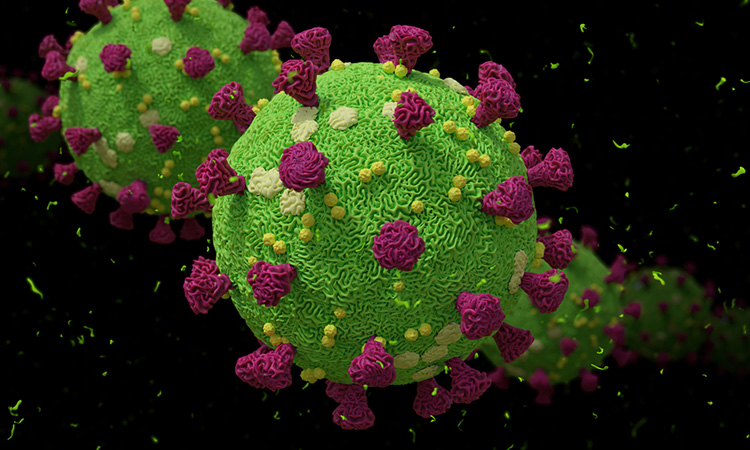New class of compounds found to block coronavirus reproduction
Posted: 24 June 2021 | Victoria Rees (Drug Target Review) | No comments yet
In cell cultures, a compound named STM2457 was shown to interfere with coronavirus replication, making it a potential treatment for SARS-CoV-2.


A human genetic mechanism hijacked by SARS-CoV-2, to help it spread, also makes it vulnerable to a new class of drug candidates, a study has found. The study was led by a team at the New York University (NYU) Grossman School of Medicine, US.
The researchers showed that SARS-CoV-2 reproduction in infected human cells requires chemical changes made by the human protein METTL3 to RNA. Additional human proteins involved in the recognition of modified RNA, YTHDF1 and YTHDF3, were also found to be important to the process.
The study showed for the first time that a molecular inhibitor of METTL3, called STM2457, dramatically reduced the replication of both SARS-CoV-2 and a less severe, seasonal coronavirus, HCoV-OC43, in cell cultures.
“Our results represent the first time a chemical inhibitor of METTL3 has been shown to have an antiviral effect for coronaviruses, or any virus,” said senior study author Professor Ian Mohr. “This represents a necessary step in drug development, identifies new targets and reveals an unexpected strategy to halt the coronavirus lifecycle.”
According to the researchers, coronaviruses that replicate inside human cells encode the complete set of their genomes in RNA chains, raising the question of whether human RNA modification enzymes, including those that attach methyl groups, could impact the production of viral proteins that enable them to multiply.
Past work in Mohr’s lab revealed the enzymes that determine whether an A (adenosine), one of the chemical “letters” making up mRNA, is methylated at the N6 position (m6A), with regulation by human m6A enzymes of mRNAs shaping the immune response to human cytomegalovirus (HCMV).
In the current study, the team showed that the reproduction of SARS-CoV-2 and HCoV-OC43 requires the action, not only of the human enzyme that installs the m6A methylation on RNA, METTL3, but human proteins that bind to this unusual arrangement of methylated RNA, YTHDF1 and YTHDF3. They also found that the RNA genomes of both study coronaviruses contained this m6A modification.
For the next step, the team partnered with Storm Therapeutics, which had run a medicinal chemistry programme to develop a compound that best inhibited the action of METTL3. The study compared the effects of the METTL3 inhibitor STM2457 and an inactive control compound, STM2120, on cultures of human lung cells infected with the seasonal coronavirus or SARS-CoV-2.
Compared with the same concentration of the inactive control compound, the highest dose of STM2457 reduced the number of HCoV-OC43 infected cells in culture by more than 80 percent, while the same dose of STM2457 reduced SARS-CoV-2 reproduction by more than 90 percent. Further experiments revealed that STM2457 reduced viral RNA and protein levels, but not by affecting the same human immune response mRNAs previously found to be important for HCMV.
“The inhibition of coronaviruses by this molecule is really encouraging but understanding exactly why coronaviruses need m6A RNA modification is important and might enable the design of compounds that work even better,” said study first author Dr Hannah Burgess.
Moving forward, the team plans to further investigate precisely how m6A modification influences virus and host gene expression in cells infected with pandemic or seasonal coronaviruses and whether STM2457 can interfere with coronavirus replication and prevent severe disease outcomes in non-human animals.
“We went into it hoping to learn about the differences between the biology of innocuous and pandemic coronavirus infections,” said co-corresponding author Associate Professor Angus Wilson. “If anything we found that both share a dependence upon the m6A methylation machinery. That creates the hope that inhibiting METTL3 may also be useful against future pandemic coronaviruses.”
The results are published in Genes and Development.
Related topics
Drug Development, Molecular Targets, RNAs, Small Molecules
Related conditions
Covid-19
Related organisations
New York University (NYU) Grossman School of Medicine, Storm Therapeutics
Related people
Associate Professor Angus Wilson, Dr Hannah Burgess, Professor Ian Mohr



